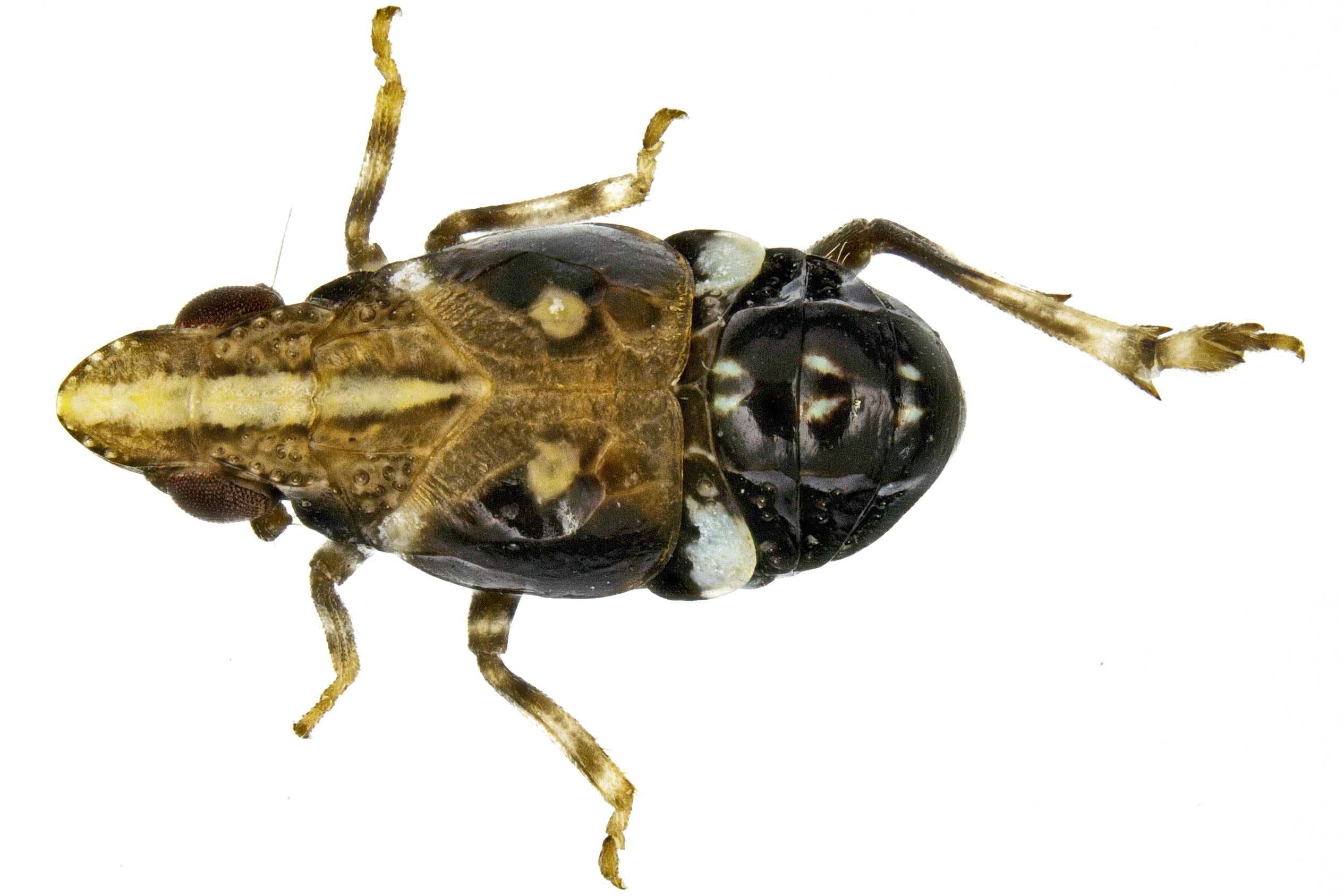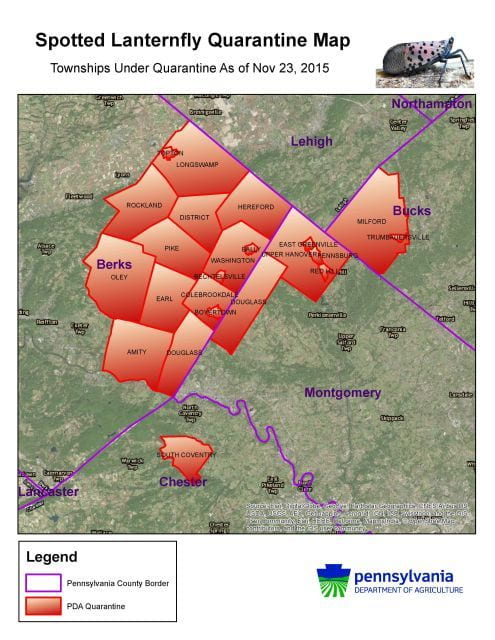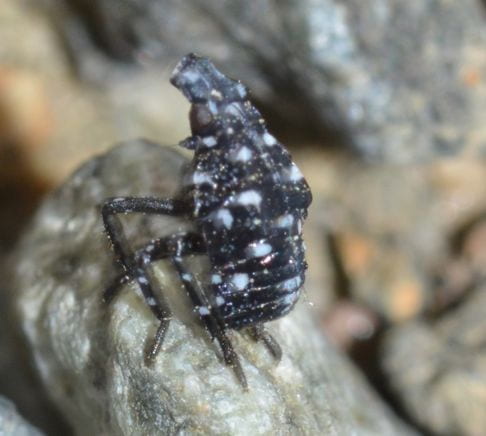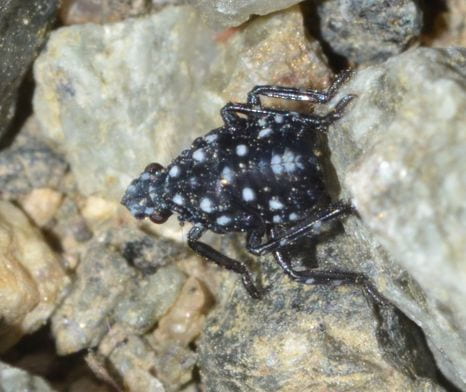27 Sept 2019
For the second time, this website has been moved to a new server.
This is not supposed to impact links to the site – should be forwarded automatically – but I have found that some of the images have disappeared. Not sure why, will fix as I encounter.
Addendum – Nov 2019: A lot of images are missing, this will take me awhile.
17 April 2019
I need to post here more often:
New major work:
Della Guistina, W. 2019. Les Delphacidae de France et des pays limitrophes (Hemiptera, Fulgomorpha). Fédération Française des Sociétés de Sciences Naturelles. Faune No. 100. 2 volumes. 832 pp.
http://faunedefrance.org/les-delphacidae-de-france-et-des-pays-limitrophes/
13 March 2019
A really interesting study
“Planthopper bugs use a fast, cyclic elastic recoil mechanism for effective vibrational communication at small body size” Here.
Other items
Spotted lanternfly is now:
Established (reproducing) in PA, NJ, VA;
Probably established in DE (New Castle Co)
Dead lanternflies found in MA, CT, MD, Kent County DE, several places in NY
25 Sept. 2018
Salvador Vitanza sent me images of Papagona papoosa Ball, which appear to be the first available images for this species. It has – to my knowledge – never been illustrated. The images are posted on bugguide and with his permission I have posted some on my Papagona page.

Papagona papoosa Ball by Salvador Vitanza from Bugguide.
25 Sept 2018
I have discovered that links to the ‘old’ server – mostly PDFs – no longer work. I have now updated the PDF library, but still need to update the genus pages to remove or update the old links.
21 March 2018
A new species of Sogatella – Sogatella unidentata Mariani & Remes Lenicov, 2017 – was recently described from Argentina. I have added it to the Sogatella page.
Mariani, R. and A.M.M. de Remes Lenicov. 2017. A new species of Sogatella (Hemiptera: Delphacidae) from temperate Argentina. Revista Brasileira de Entomologia 62: 77-81. [https://doi.org/10.1016/j.rbe.2017.12.001].
In 2017, three new New World genera have been described
Tragediana Campodonico, 2017
Astatometopon Campodonico, 2017
Neodelphax Remes Lenicov & Brentassi, 2017
As of the present, I have developed web pages only for the last two.
Campodonico, J. F. 2017. Tragedian chusqueae gen. et sp. nov., a Delphacini (Hemiptera: Fulgoromorpha: Delphacidae) from south central Chile. Annales Zoologici Warszawa 67(4): 673-678.
Campodonico, J. F. 2017. Astatometopon sakakibarai gen. & sp. nov., a montane planthopper from Chile (Hemiptera: Fulgoroidea: Delphacidae). Acta entomologica Musei Nationalis Pragae 57(1): 1-10.
Remes Lenicov, A. M. M. & Brentassi M. E. 2017. New taxa and combinations in Neotropical Delphacini (Hemiptera: Fulgoroidea). Zootaxa 4281(1): 280-290.
For other news, the spotted Lanternfly continues to expand its range in eastern US.
https://www.aphis.usda.gov/aphis/resources/pests-diseases/hungry-pests/the-threat/spotted-lanternfly/spotted-lanternfly
Dec. 12, 2017
It was temporary; working again. (Thanks Greg)
my searchable bibliography is down
(viz. http://delphacid.anr.udel.edu/delpha/list_delph)
I am assured this is temporary….
April 21, 2016; April 21, 2017
(Re: University of Gdańsk, Poland)
Jan. 20, 2016
The datebug (Asarcopus palmarum, Caliscelidae) shows up in Texas.
Salvador Vitanza, an extension agent at Texas A&M AgriLife Extension Service for El Paso & Hudspeth Counties, photographed this from a date palm in his back yard and posted it on bugguide (here). It turns out to be the first record of the databug outside of California. The databug is adventive to the US from Northern Africa and the Middle East. Salvador kindly allowed me to use his photographs below.
Salvador has other photos of Auchenorrhyncha on his Extension Education in El Paso County page, also on Facebook, as El Paso Bugs.
Male Asarcopus palmarum
Female Asarcopus palmarum
Jan. 13, 2016
Julie Urban sent me a photograph of wing art put together from wings of spotted lanternfly. The art was provided by Pennsylvania Department of Agriculture’s Sven-Erik Spichiger. The art is being displayed at the 27th USDA Interagency Research Forum on Invasive Species being held this week in Annapolis, Maryland.
Thank you Julie and Sven.
Dec. 9, 2016
Spotted lanternfly in Berks and Chester County also (map from PDA, see link).
October 15, 2015
The spotted lanternfly has now been found in northern Montgomery County (see press release).
My information is that the spotted lanternfly is quite abundant in some places within the quarantine area. Adults should live only until the first frost (which may be this weekend).
See also PDA website here http://extension.psu.edu/pests/spotted-lanternfly
and here: http://www.agriculture.pa.gov/Protect/PlantIndustry/spotted_lanternfly/Pages/default.aspx#.Vh_vbSsXeSp
The quarantine map looks like this now (original found in link on right margin of the above link):
Image: PA Dept of Agriculture
August 12, 2015
An update on spotted lanternfly (Lycorma delicatula) on the Pennsylvania Department of Agriculture website is here.
Adult spotted lanternflies showed up in mid-July. The tree-banding effort has controlled about 67,000 nymphs.
Also, a pest alert for Tarophagus colocasiae is here. From what is known so far, the species traced back to plants from a particular Home Depot and the nursery that supplied them. However, the species is established in Jamaica and apparently Cuba.
July 17, 2015
I have recently added a (long overdue) page for Bulldolonia and substantially updated Acanalonia. Further updates to Acanaloniidae expected (hope to build pages for the other genera). Have added a pages for Ampliphax and Tarophagus in Delphacidae.
I built a page for Petrusa (Flatidae) that was lost in a crash; should have it done (again) next week. Also, I’ll have an important update on Pyrophagus (Delphacidae; it was finally described) here.
Remes-Lenicov, A.M.M. de and G. Varela. 2014 A new genus and species of Delphacini (Hemiptera: Fulgoroidea: Delphacidae) from Argentina. Zootaxa 3861(2): 177-184. (pubmed here)
Velazquez, P.D.; F.A. Guzmán, L.R. Conci, A.M.M. de Remes Lenicov and G.A. Truol, 2006. Pyrophagus tigrinus Remes Lenicov & Varela (Hemiptera: Delphacidae), a new vector of the Mal de Río Cuarto virus (MRCV, Fijivirus) under experimental conditions. Agriscientia XXIII (1): 9-14.
July 6, 2015
New publication.
Barringer, L. E., L. R. Donovall, S.-E. Spichiger, D. Lynch and D. Henry. 2015. The first New World record of Lycorma delicatula (Insecta: Hemiptera: Fulgoridae). Entomological News 125(1): 20-23.
Other news:
The flatid Petrusa epilepsis (Kirkaldy, 1767) (the ‘Sea Grape Flatid’; seagrape is Coccoloba uvifera (L.) L., but the flatid is polyphagous) has been reported in Florida (the photos below is not very good, but it is what I have). the species has a dark form and pale form, which were initially described as separate species.
Also detected in Florida is Tarophagus colocasiae (Matsumura), one of the Taro planthoppers. The species was evidently found in Cuba in 2011. The status of this species is not clear, but it was detected in suction traps used for monitoring purposes.
May 15, 2015
I have several updates (that will be added later), but I have an update on Lycorma. Nymphs have recently been detected at one of the outbreak sites in Berks Co., PA. The nymphs were near the ground on the protected side of a rock near tree of heaven. The nymphs were active (but this was possibly because we had disturbed them). We did not find any nymphs up on plants, possibly indicating that they are nocturnal feeders (or they had just emerged and had not moved to the plant yet. Pennsylvania Department of Agriculture is banding tree-of-heaven with sticky tape to monitor and potentially control Lycorma.
Lycorma delicatula, first instar, Photos by Greg Hoover, Dept. of Entomology, Penn State University.
Nov. 6, 2014
An exotic planthopper has been found in Berks Co., Pennsylvania. In September 2014, Pennsylvania Department of Agriculture has confirmed the presence of Lycorma delicatula (White, 1845) near Reading, PA this summer. This species probably came from China, and may have arrived 2 years ago (hence has successfully overwintered). The area is now under quarantine, and a local pest alert has been issued (a national pest alert is forthcoming as of this writing). They are giving this species a common name of ‘spotted lanternfly’. It is possible – probable – that there are other undetected populations (the port-of-entry appears to have been New York City). If you find this species (especially outside of the quarantined area) contact your local extension office (e.g., Penn State Extension offices), Email badbug@pa.gov, or call the Invasive Species Hotline at 1-866-253-7189.
Lycorma delicatula arrived into Korea in 2006 (and subsequently Japan), where it has become broadly established. The primary host of the species is tree of heaven (Ailanthus altissima), but feeds / reproduces on a variety of plants (mostly trees). Particularly troublesome is that grapes (Vitis sp) are a particularly preferred host, but a number of tree fruits (apple, cherry) are on the host list as well. The species sequesters toxins (esp. from its preferred host) and generally birds will not consume this species.
Adult Lycorma delicatula from Pennsylvania (Photograph by Lawrence Barringer, Pennsylvania Department of Agriculture). 
Lycorma delicatula adult with wings spread (Photograph by Holly Raguza, Pennsylvania Department of Agriculture)
Some subsequent news stories
Berk’s County Conservation District
Sorry for the delay in news – our college website was being updated and moved to a new server. There might be continued issues pertaining to this (dead links or links that return to the main page).
July 3, 2014
An unidentified flatid has bean causing problems on crops in Bolivia.
The left photo is on fig, the right I am not sure (I think the photos are by Jose Luis).
Below are some photos by Tony Dickens, Division of Plant Industry, Florida Department of Agriculture and Consumer Services. So far have been unable to put a name on it. It is likely a Flatormenis, but possibly a related genus (most likely Anormenis or Leptormenis). It is supposed to be about 7 mm (to me looks a little bigger in the photos). I guess I will have to borrow representatives of any of the candidate species to figure this one out.
June 24, 2014
New publications:
Finally it is out:
Bartlett, C. R., L. B. O’Brien and S. W. Wilson. 2014. A review of the planthoppers (Hemiptera: Fulgoroidea) of the United States. Memoirs of the American Entomological Society 50: 1-287.
Available from the American Entomological Society (order from PDF) (AES still needs to update its website)
Also available:
Bartlett, C. R. 2014. New species of the planthopper genus Parkana (Hemiptera: Fulgoroidea: Delphacidae) from Mesoamerica. Transactions of the American Entomological Society 140: 185-208. (PDF here)
Lots of website updates will follow.
April 22, 2014
New publication (free book).
Vladimir Gnezdilov and colleagues has finished an important work on Palearctic Issidae. Vladimir – hand his institution – would like to encourage download (and use) of this work.
Gnezdilov, V. M., W. E. Holzinger and M. R. Wilson. 2014. The western Palaearctic Issidae (Hemiptera, Fulgoroidea): An illustrated checklist and key to genera and subgenera. Proceedings of the Zoological Institute RAS. 318, supplement 1. 118 pp.
April 17, 2014
2014 Little Orleans Camping trip
As announced elsewhere, we will have the 22nd Annual Treehopper Gathering on 27 to 29 June 2014 (arrive Friday, depart Sunday), at Little Orleans Campground. It is being held late this year to correspond with the new moon (for better collecting at lights), and to see if we find any late emerging telamonine treehoppers for the site (we have published on the treehoppers of Little Orleans).
Since this event is much later, planthopper collecting should be much better (early June is much too early for most planthoppers). Should be good for cixiids.
Contact me if interested in going. We need a headcount for food on Saturday night (common meal) and to make sure we don’t exceed the group tenting area’s capacity.
Recent downtime
The recent downtime was caused by transfer of the site – the whole College website – to a new server, with the launch of a newly designed college website. I knew the downtime would occur, but not exactly when and for how long. Everything should be working; inform me if otherwise.
March 27, 2014
Yet another new genus and species, this one a very unusual Platysystatini from Ecuador (although ‘unusual Platysystatini’ may be redundant)
Pichinchana gilletti Asche and Webb, 2014 described in:
Asche, M. and M. D. Webb. 2013. A remarkable new asiracine delphacid planthopper from Ecuador (Hemiptera, Fulgoroidea, Delphacidae). Deutsche Entomologische Zeitschrift 60(2): 163-169.
March 20, 2014
Another new publication on North American planthoppers:
Halbert, S. E., S. W. Wilson, B. Bextine and S. B. Youngblood. 2014. Potential Planthopper Vectors of Palm Phytoplasmas in Florida with a Description of a New Species of the Genus Omolicna (Hemiptera: Fulgoroidea). Florida Entomologist 97 (1): 90-97. (link to BioOne, not on Florida Entomologist site yet)
Describes Omolicna joi as a new species of Derbidae from Florida and its potential role as a palm disease vector.
March 11, 2014
Herbert Nickel’s book The leafhoppers and Planthoppers of Germany (Pensoft, 2003) is now available online as a PDF here.
A valuable resource – get it, read it.
Feb. 28, 2014
New publication:
Kennedy, A. C. and C. R. Bartlett. 2014. Systematics of Caenodelphax Fennah (Hemiptera: Fulgoroidea: Delphacidae) and description of the new genus Flavoclypeus. Transactions of the American Entomological Society 140: 17-65.
http://taes.entomology-aes.org/pages/show/products-2
Will have to update Caenodelphax and Delphacodes, plus add the new genus Flavoclypeus (soon).
Feb. 23, 2014
Updates…
The genus pages – especially for Delphacidae – are slowly being updated to include a more detailed literature (which should include all the literature for the original species descriptions), with links to Biodiversity Heritage Library for the older literature (and a few links to more recent online journals) as applicable and as I have time – adding these links is a surprisingly ponderous task. BHL has much of the pre-1923 (i.e., not in copyright) literature.
Other updates I intend to make are linking host plant names to USDA PLANTS or Tropicos, adding links to other websites or illustrations, updating the molecular information section, and sometimes adding keys to species from published sources or additional illustrations. In some cases I am adding a critical synonymy list. These updates may take a long time to complete.
Also, some soon-to-be published articles are going to move some species, which will motivate some of these changes.
I have added a simple list providing the higher classification of Delphacidae (i.e., subfamilies and tribes, with all valid genera placed). This list provides links to the delphacid genus-pages that I have made.
Jan. 23, 2014
I have added a checklist of of Delphacidae of Australia. It is skeletal at the moment, but will become more filled out over the next several months. Thanks to Glenn Bellis for this.
Jan. 14, 2014
A draft page on planthopper phylogenetics (so far above the family level) has been added. It requires more work, but is reasonably coherent.
Jan. 8, 2014
Newly described planthopper taxa.
Florida Entomologist 96(4) (online now) has the description of a new delphacid genus and species from Argentina – Lepidelphax pistiae Remes Lenicov. I’ll update my website to include this taxon soon.
Also, there is a new Omolicna (Derbidae) described from Florida that will be published soon.
December 26, 2013
Content for all planthopper genera North of Mexico has now been uploaded (some genera of Flatidae were intentionally delayed because they would annotate some taxonomic changes from Bartlett et al. (in press), which I anticipate being published in January (or so) 2014).
Next tasks include slowly updating pages to include synonymy lists, links to Biodiversity Heritage Library (and elsewhere), expanding the literature (especially for Delphacidae), finishing the phylogenetics overview, adding commentary regarding higher taxa, including additional images, and adding information from a variety of side projects, including Planthoppers of Costa Rica (based mainly on literature), Hemiptera of the Great Smoky Mtns National Park, and – hopefully – Delphacidae of Australia (and so on).
I will add pages for selected Neotropical genera as photographs become available.
There will be a substantive update following the publication of Bartlett et al. (as Memoirs #50 in Memoirs of the American Entomological Society).
Nov. 15, 2012
Content for nearly all planthopper genera North of Mexico (except Gaetuliini, Tropiduchidae, at this point) has been uploaded. Development of content has slowed a little because of the birth of my son (on Oct. 18), and subsequently by hurricane Sandy. I hope to have content for the remaining 10 genera by the end of the calender year.
I also have additional delphacid species photographed and will work on uploading that content once I finish with the Gaetuliini.
Unrelated to this website, but of interested to the larger community (particularly here at the University of Delaware) is that Tom Wood’s treehopper collection at Cornell has been curated and a list is now available online here at the Cornell University insect collection.
Sept 3, 2012
I have uploaded content for Acanaloniidae, Achilidae, Caliscelidae, Cixiidae, Derbidae, Fulgoridae, Issidae and
Kinnaridae for genera north of Mexico (front page here). This leaves Dictyopharidae, Flatidae, Nogodinidae, Tropiduchidae and a key to family to go. Dictyopharidae next.
Interesting mystery – this photo was taken of some delphacids on the grass Paspalum in Florida:

Image courtesy Lyle Buss (U. of Florida, Dept. Entomology & Nematology)
Update: These are Tagosodes albolineosus on Paspalum repens.
Aug. 3, 2012
Okay – I’m not good about putting updates here.
Anyway – new pub:
Kennedy, A. C., C. R. Bartlett, and S. W. Wilson. 2012. An annotated checklist of the delphacid planthoppers (Hemiptera: Delphacidae) of Florida with the description of three new species and the new genus, Meristopsis. Florida Entomologist 95(2): 395-421. (http://journals.fcla.edu/flaent/issue/view/3805)
The digital library has been updated substantially
http://ag.udel.edu/enwc/research/delphacid/digitallibrary.html
And major updates happening here
http://ag.udel.edu/enwc/research/planthoppers/
June 20, 2011
I’ve had a major update to the parasitoids of Delphacidae courtesy of Dr. Eduardo Virla and Dra. Erica Luft Albarracín (División Control Biológico de Plagas, Laboratorio de Enemigos Naturales de Plagas Agrícolas del NOA, PROIMI Biotecnologia – CONICET, Tucumán, Argentina; http://www.biocontroltucuman.com.ar/). They have provided a list of delphacid parasites, their hosts, literature and other information. The updated page is here.
I very much appreciate the update from Dr. Virla and Dra. Luft Albarracín. Thank you –
Dr. Virla has a dryinid site here: www.parasitoides.com.ar.
May 30, 2011
I now have a web page completed for all New World genera (here). I still would like to add pages for a few Old World genera that are of concern – which would be linked from the ‘Economic Importance’ or ‘Species of Special Concern’ pages. I’ll be adding content to these pages as materials, time, and inspiration allow.
March 21, 2011
The 19th annual aggregation at Little Orleans campground in Maryland will be held June 3-5 2011 (arrive Friday, depart Sunday). The trip was originally started in 1989 by the late Tom Wood as an informal aggregation of treehopper workers, students, friends and significant others. Now, while the Membraskiteers still form the core of the group (an example of phylogenetic inertia?), entomological interests of the group is more diverse. It still provides a great opportunity to talk and collect with others passionate about insects.
To obtain further information, please contact me. Campsites are somewhat limited, and I need to plan food on Saturday evening, so please let me know if you plan on attending. Participants are expected to provide their own tents, food, and camping gear, and to share in the cost of the group campground registration and the group meal provided on Saturday evening.
The gathering has also been announced at Lew Deitz & Matt Wallace’s Treehopper site here (at the bottom of the page).
Other News –
There are now web pages for all genera of New World Asiracinae (there is a link to each tribe, and from each tribe a link to each genus), Plesiodelphacinae, and Kelisiinae. I still have Stenocraninae, and the Tropidocephalini and Saccharosydnini within the Delphacinae to complete.
March 4, 2011
I’ve been creating web pages for all New World genera and genera with potentially invasive species. At this writing, I have 5 more genera before I am done with the 73 genera of Delphacini. The pages provide a species list of the genus, host records, comments on economic importance, specimen photos, and selected references. Of course I will be updating and improving these pages over time.
We can now post PDFs into the 1940-present bibliographic database. PDF’s have been getting uploaded quickly – about 1,000 uploaded as of this writing. Most of the PDFs are just scans of photocopies. We will be improving these as opportunity allows (I would be happy to accept PDF contributions).
The list of New World species has been updated a number of times. We are working on a database for New World species – it is expected to replace the text listing of species that I posted some time back.
Lots of little changes…
January 10, 2011
The interactive morphology guide has been posted here.
I’ve updated and compiled the Nearctic and Neotropical species list into a single list, which I have posted under “New World Species”. With a little more editing I’ll post a PDF. Photos of each genus will follow, probably after IT reconfigures the pages I’ve created for the list.
I’ve also begun to post PDFs for the Pre-1940 digital library. Posting PDFs for the 1940-present library is hung up because of a technical glitch for the moment.
August 3, 2010
I’ve updated the South American delphacid checklist – adding a new species and added the species from Juan Fernandez and Chiloe Islands, which for some reason were not there. I’ve also updated the specimens wanted section, again.
A beta version of the morphology guide will be posted after we’ve had a little more time to work with it.
June 25, 2010
The morphology guide is almost ready. I uploaded a screenshot this morning.
I’ll be presenting at the 13th International Auchenorrhyncha Congress (and 7th International Workshop on Leafhoppers and Planthoppers of Economic Significance) held in Vaison-la-Romaine in the south of France in a couple of days.
The “specimens wanted” checklist has been updated.
May 3, 2010
The species checklists for both North and South America have been updated.
(I had missed the Juan Fernández Islands entirely!) I’ve also updated the
numbers of New World species annotated on the ‘scope’ page.
The interactive morphology guide is coming along….
April 2, 2010
This site came online Sept. 2009.
I’ll post significant changes, updates or other events here.
This site is new, so contact me with comments or questions.
in particular, let me know if you find any errors, or something
that needs to be explained better.
Charles Bartlett
University of Delaware
Department of Entomology and Wildlife Ecology
250 Townsend Hall
531 S College Ave
Newark, DE 19716-2160
Below: Bakerella cornigera Beamer, 1950


























